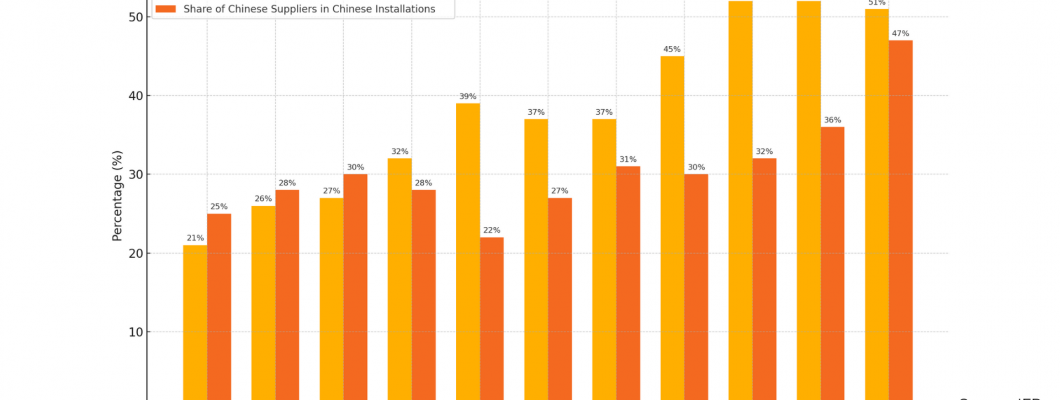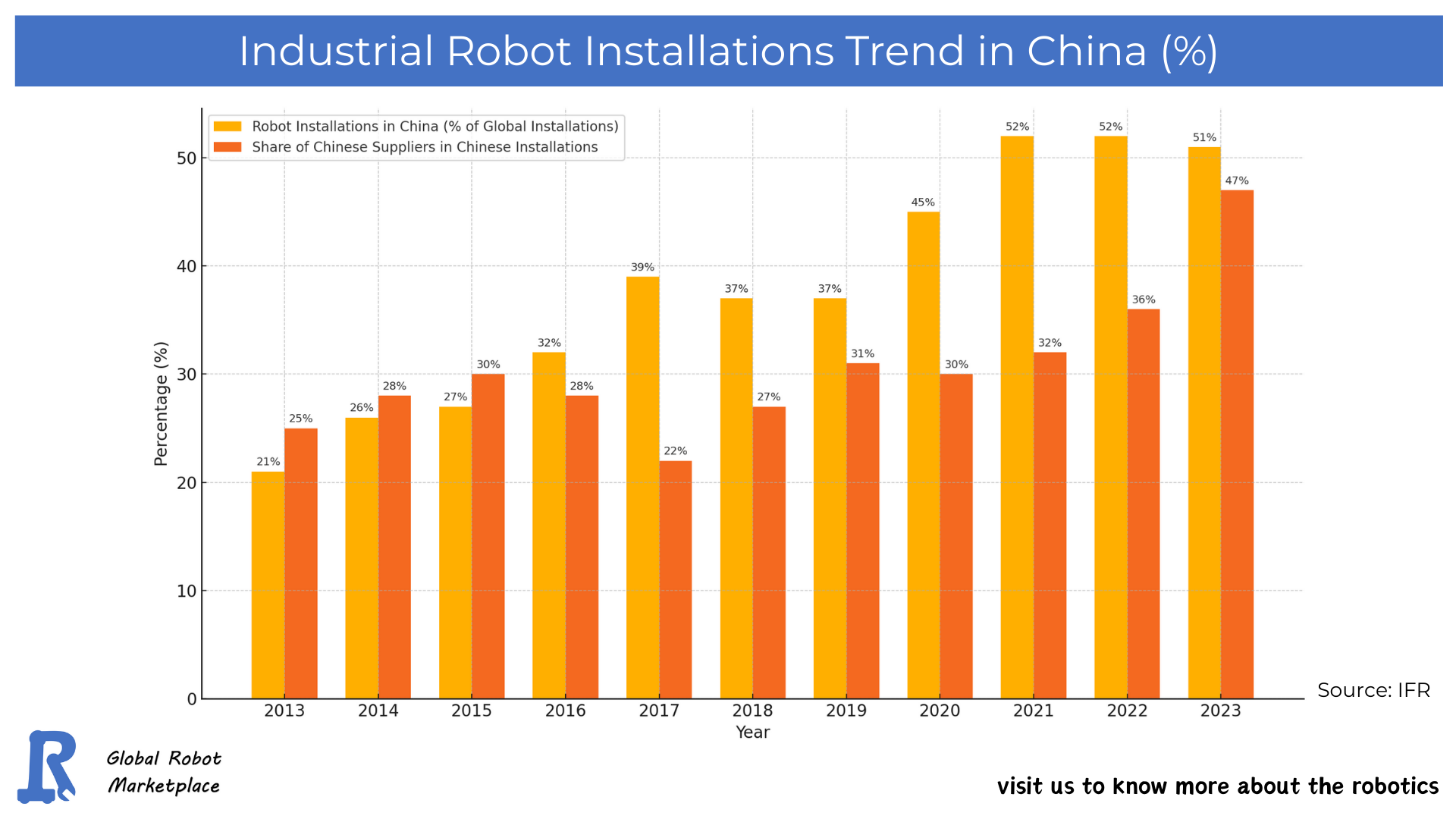
China has emerged as a global leader in industrial robotics over the past decade, as clearly illustrated by recent installation trends. From 2013 to 2023, the percentage of global industrial robot installations taking place in China has surged significantly, starting at 21% and peaking at 52% in both 2021 and 2022, before slightly dipping to 51% in 2023. This consistent upward trajectory highlights China's growing reliance on automation to sustain manufacturing efficiency and global competitiveness.

Equally noteworthy is the increasing dominance of Chinese robot suppliers within this growing market. Initially fluctuating in the early years, the share of Chinese suppliers in domestic robot installations exhibited a robust upward trend from 30% in 2020 to an impressive 47% in 2023. This indicates substantial growth in local expertise and capability, reducing China's historical dependence on foreign suppliers and signaling a strategic shift towards homegrown innovation and technological autonomy.
The strategic implications of these parallel growth trajectories are profound. China's drive towards industrial automation is underpinned by national policy initiatives aimed at transforming the country into a global leader in high-tech manufacturing. Initiatives such as the "Made in China 2025" plan explicitly emphasize robotics and automation as core technologies critical to future economic prosperity and industrial self-sufficiency.
This rapid growth of robotics installations within China is supported by strong government incentives, significant investments in research and development, and the fostering of a robust startup ecosystem focused on artificial intelligence and robotics technologies. Local manufacturers have progressively increased their technological capabilities, enabling them to compete more effectively against established global robotics firms from countries such as Japan, Germany, and South Korea.
Furthermore, the increased adoption of industrial robots is driven by factors such as rising labor costs, an aging workforce, and the need for higher precision and productivity standards in manufacturing sectors like automotive, electronics, and consumer goods. Robots offer solutions to these challenges by improving efficiency, consistency, and productivity, helping China to maintain its position as a competitive global manufacturing hub.
Given the strategic importance of robotics in shaping future manufacturing and economic landscapes, these trends in China are likely to have extensive implications on global supply chains and competitive dynamics within the international robotics market. Countries and corporations worldwide may need to reevaluate their competitive strategies and technological investments in response to China's rapid ascendancy in industrial robotics.
